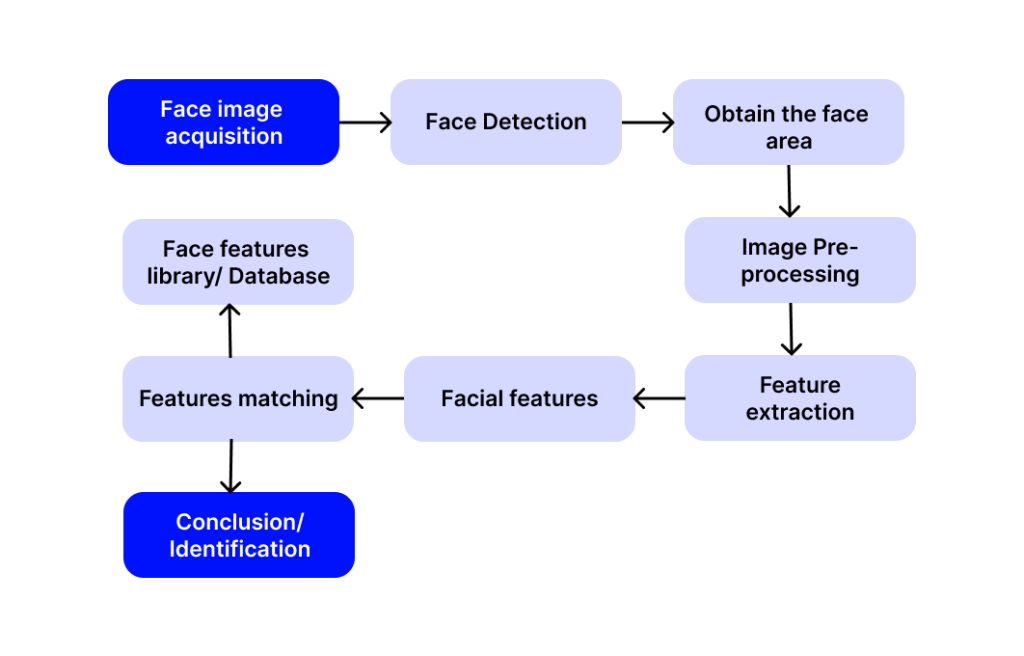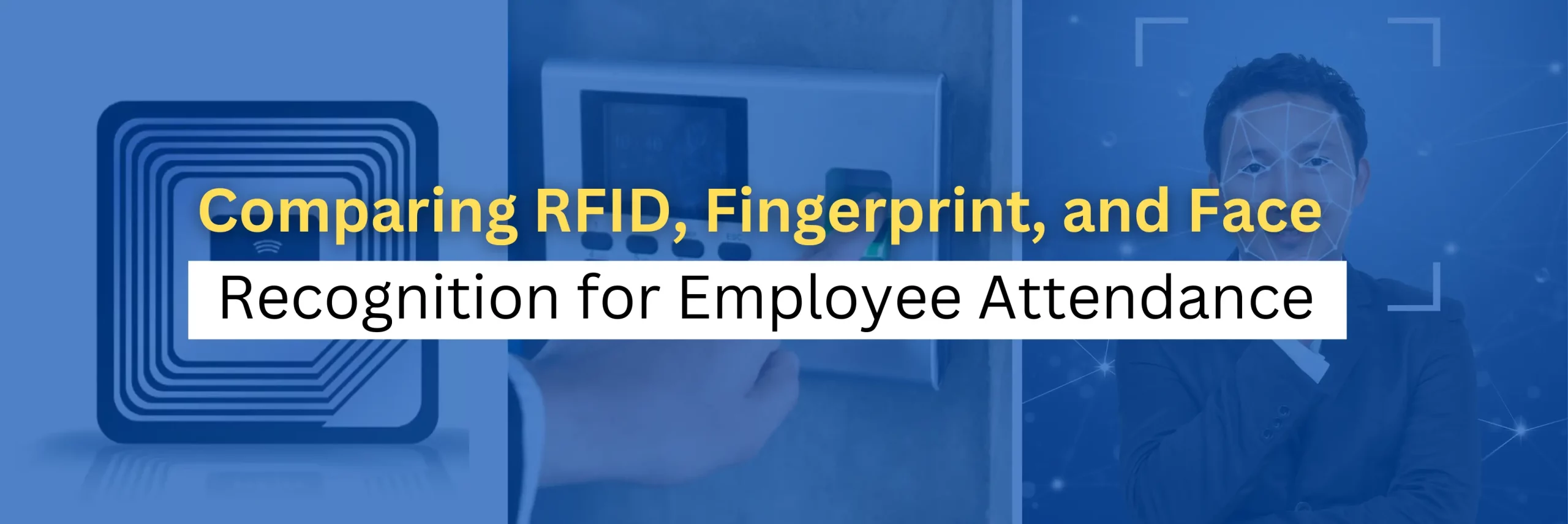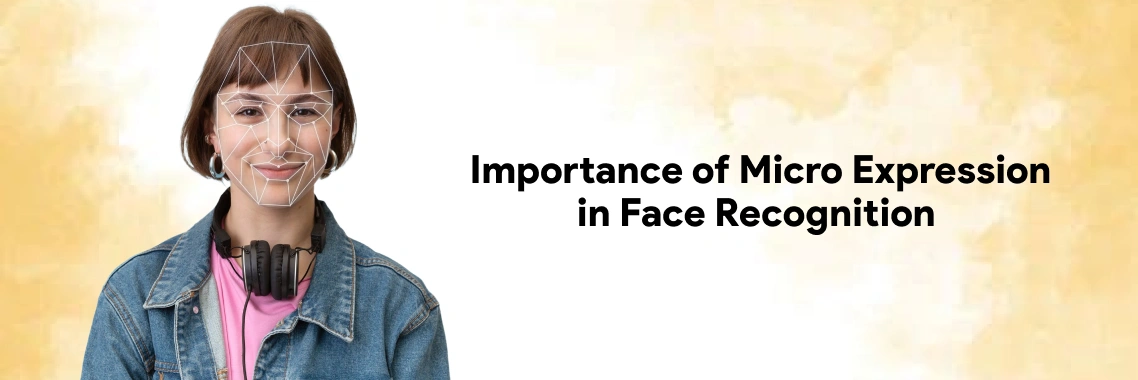Let’s face it—we’re all accustomed to facial recognition technology, from unlocking our iOS/Android smartphones to accessing secure banking vaults.
This shows how enthusiastic we are about utilizing it, which drives businesses to deploy this technology into their processes.
But as it is said, “Big things come with bigger responsibilities.” You must understand its critical factors before initiating a project; otherwise, it could lead to doubtful questioning rather than convenience, such as:
- Is there any chance to improve its accuracy and quality assurance?
- What if it compromises privacy?
- How can you make the most out of this technology?
So, let’s dive into its details—but before that, let’s go back to where this story begins!
The Basic of Facial Recognition & Its API’s Workflow
Facial recognition is working on detecting individual facial features, analyzing the branch of images and approving facial matches with higher accuracy. And, its API facilitates smooth communication between software components while saving you from deploying this technological efficiency from scratch.
To understand how this works, let’s take an example. Say you’re an event management company looking to utilize facial recognition to manage event check-ins using a facial recognition API.
In that case, you first need to build a database of all participants to enroll images with different subject IDs. This database stores one or more facial images of individuals with common facial features. Once this is done, the API can extract unique facial features, compare them against pre-registered images, recognize individual matches, and verify them to provide entry.

The Reasons Behind Concerning Ethics of Facial Recognition
Facial recognition technology can be incredibly useful, offering life-saving perfection. However, it is not beyond ethical considerations, which can impose serious consequences. So, what makes it vulnerable?
Biased algorithms and discrimination
Facial recognition algorithms have shown biases and inaccuracies in certain areas which impact on accuracy output. For example, it can potentially fail to recognize individuals with certain demographics, likely, darker skin tone, younger or older subjects, or masked faces, which leads to discriminatory outcomes.
False positive/negative and misidentification
Facial recognition technology isn’t infallible; it’s prone to misidentification due to false positives or false negatives. False positives occur when the software matches two different individuals as the same person, while false negatives reject different images of a single individual instead of acknowledging they belong to the same person.
Lack of regulation and transparency
Lastly, the ethical concern of facial recognition lies in how it collects, stores, uses, or operates users’ data. If there is a lack of transparency regarding data security, compliance, surveillance, and control, it can lead to polarized opinions and erode trustworthiness.
Best Practices for You to Utilize Full-Fledge Convenience of Facial Recognition & Its API
Every problem has its own solution, so does face recognition. Amidst numerous ethical issues, you can protect this technology’s workflow from being fragile. Here’s what your approach should be:
Ensure best dataset quality while training your model
The first and foremost important is how you train facial recognition based models which is impacting on the end performance. Prioritizing following technical recommendations can foster high face detection accuracies without sacrificing its effectiveness:
- Image capture: To capture the best facial images, the camera should be placed at eye level so that the subject looks directly at the camera while avoiding extreme angles. To avoid shadowing, the images must be taken under the bright light. Additionally, ensure the images are neither blurry nor posing extremely different poses and facial expressions, or taken while wearing glasses or lenses.
- Pixel requirement: As the captured and enrolled facial images are a most prominent factor to get accurate optimum results, pixels within images play a vital role. The pixel requirements lie upon two factors: absolute face size and the face size related to the total size of an image. While at least 64 pixels are sufficient, file formats like BMP, PNG, or JPG are recommended.
- Face enrollment: As the accuracy of face detection and verification lies upon the quality of face templates that are enrolled to create the database, generally 5-8 facial images per user should be taken. Although the number of images can be varied by the API provider, they do it to maximize the confidence score and avoid falsification.
Establish high quality data annotation
Once you gather the required facial data to create a branch of a dataset, you must do data annotation to make algorithms understand what they should look for in images. It is important to label, detect, and differentiate individuals’ facial postures while annotating landmarks and finding out the density and distance in particular areas on the faces. Therefore, it’ll help you to maintain consistent accuracy while easily avoiding altered faces.
Choose efficient and updated algorithms
The choice of face detection algorithms has a greater impact on how quickly your facial recognition system will deliver accurate results. While earlier algorithms struggled with changing posture, occlusion, background, and age, newer ones, such as CNN, are flexible enough to differentiate twins, aging, and masking. Updated algorithms are also lightweight, making them suitable for running applications across devices, from smartphones to surveillance cameras.
Consider ethical factors and balance security
To address ethical practices and leverage the benefits of facial recognition, stay informed about data integration, technological advancements in machine learning, computer vision, biometrics, data security policies, and law enforcement regulations. Remember, all these elements are interconnected and influence the balance between risks and fair rights.
Manage API calls and reduce latency
When relying on cloud-based facial recognition APIs to enhance applications, these tools can efficiently handle tasks such as face detection, comparison, matching, and verification. However, optimizing performance is crucial, especially when you’re dealing with large datasets or multiple requests. Here's what you need to check:
- Batch API requests: Instead of sending multiple requests for individual images, group images related to a specific subject ID are sent as a batch. This reduces the overhead of repeated API calls and significantly cuts down latency, ensuring faster authentication processes.
- Implement caching mechanisms: Cache frequently accessed results, such as previously verified faces or matched pairs, to eliminate redundant API calls. This approach not only reduces latency but also lowers the cost of repeated queries.
Lystface API + Your Project: The Combo That Can Standout for Developing with Face Recognition
Today, face recognition doesn’t remain a general choice but has become a dire need, and facial recognition API makes your life easier by using it instead of building its applications on your own.
Here, I’m not taking anyone away from experiment, but simply pointing out that when advancements are within reach, why put in extra effort? Otherwise, you might find yourself dealing with complexities such as edge cases, debugging, or balancing security.
However, if you believe in an API to leverage better accuracy, security, and performance while making your preferred device adaptable and accessible with face recognition, Lystface can be your go-to choice. Not just because it manages a heavy load of authentication traffic but because it adds an extra layer of security with encryption and 2FA, all supported by troubleshooting companions.
So, if you’re looking to make a choice that your users find trustworthy and reliable, don’t hesitate to hit signup with Lystface!






